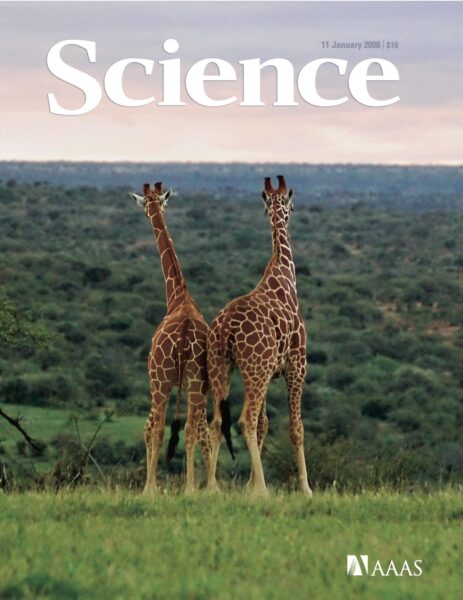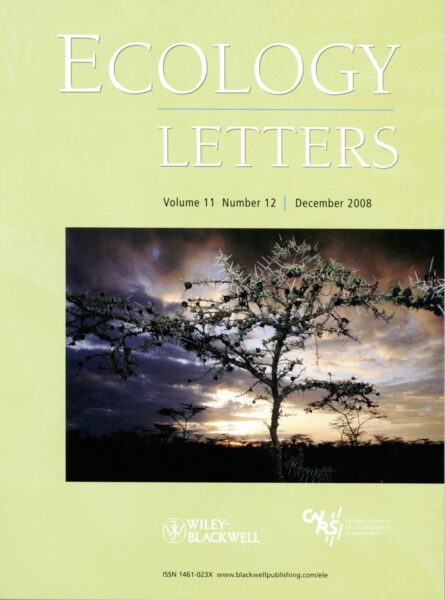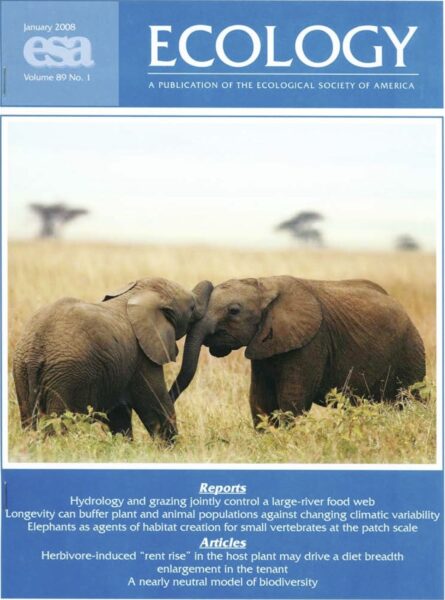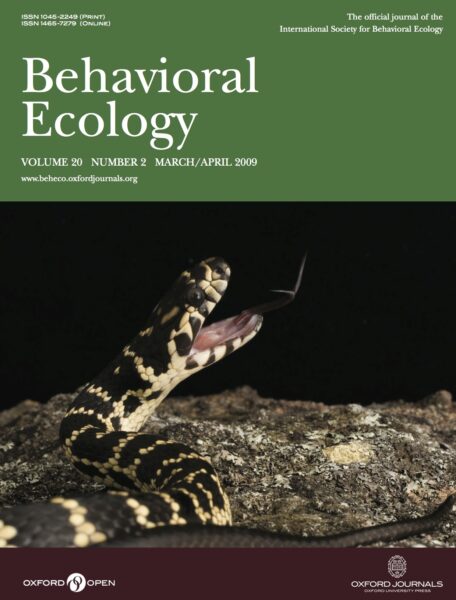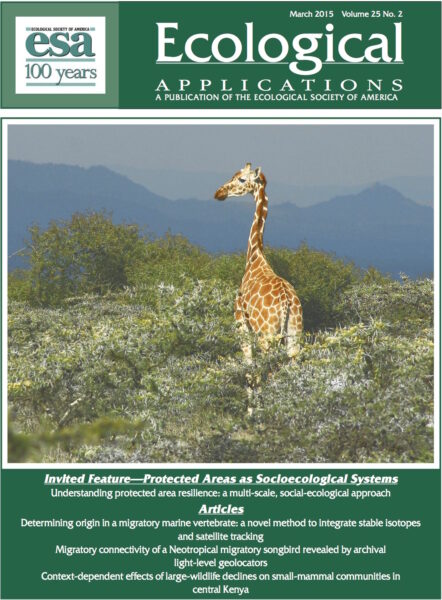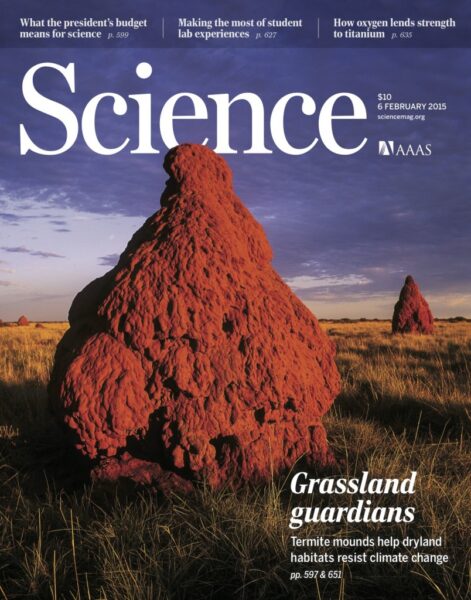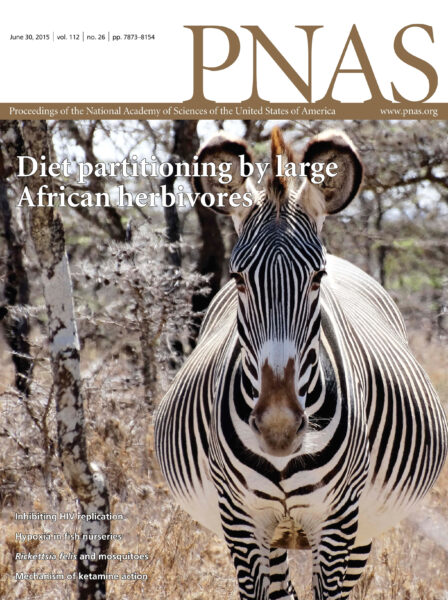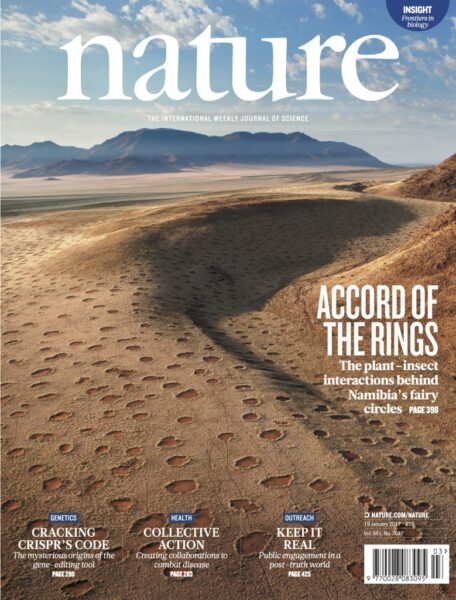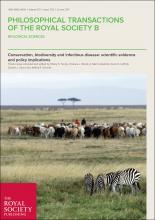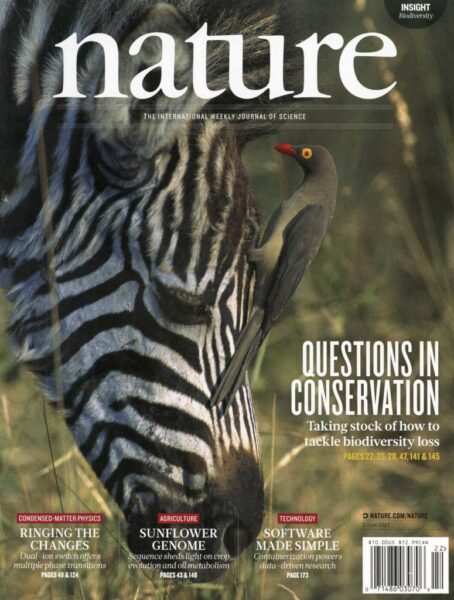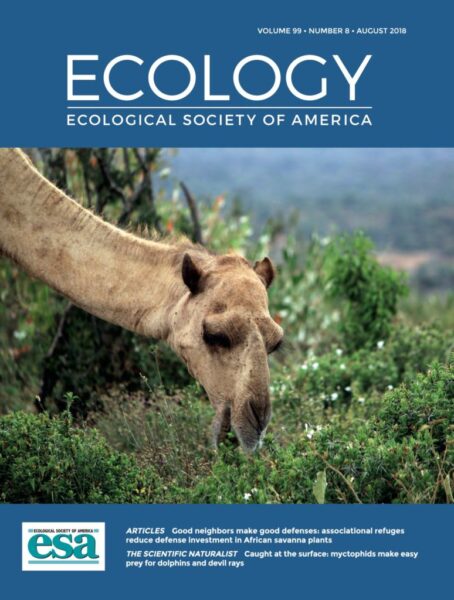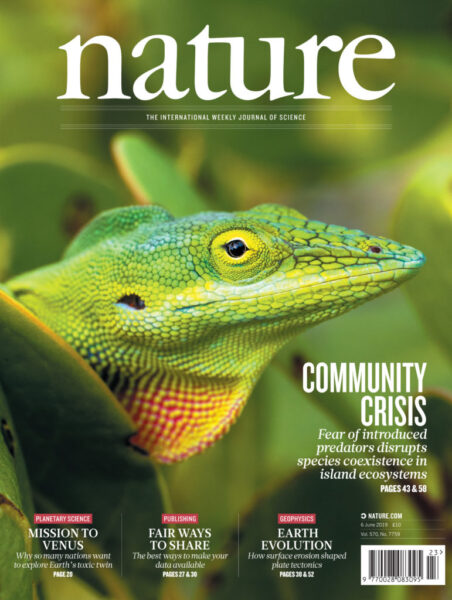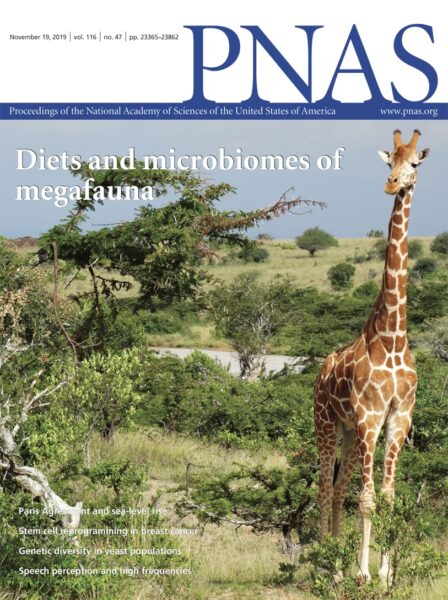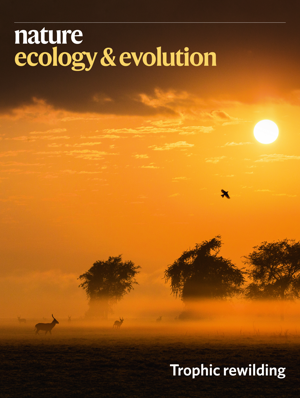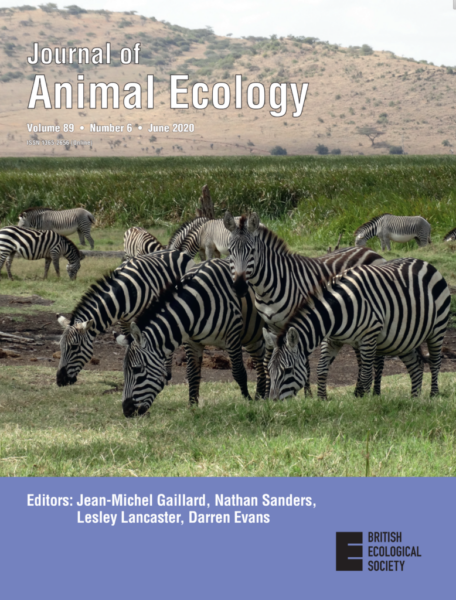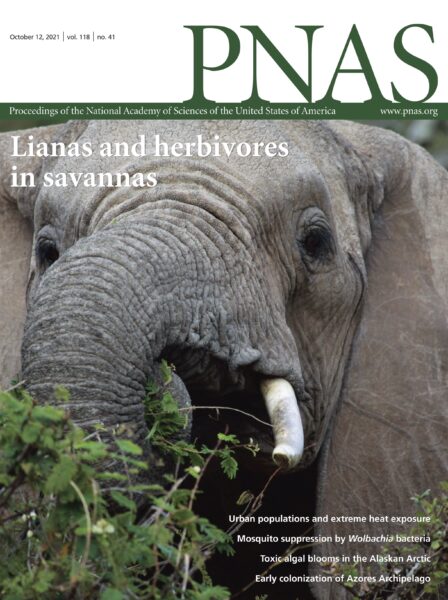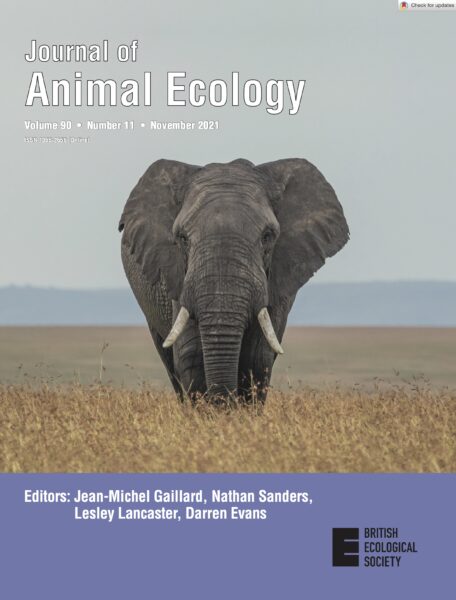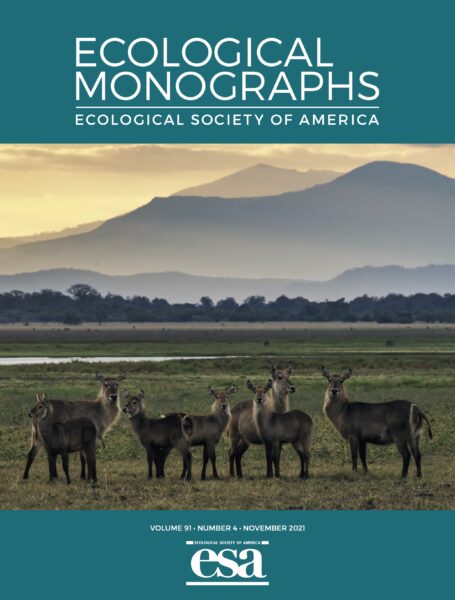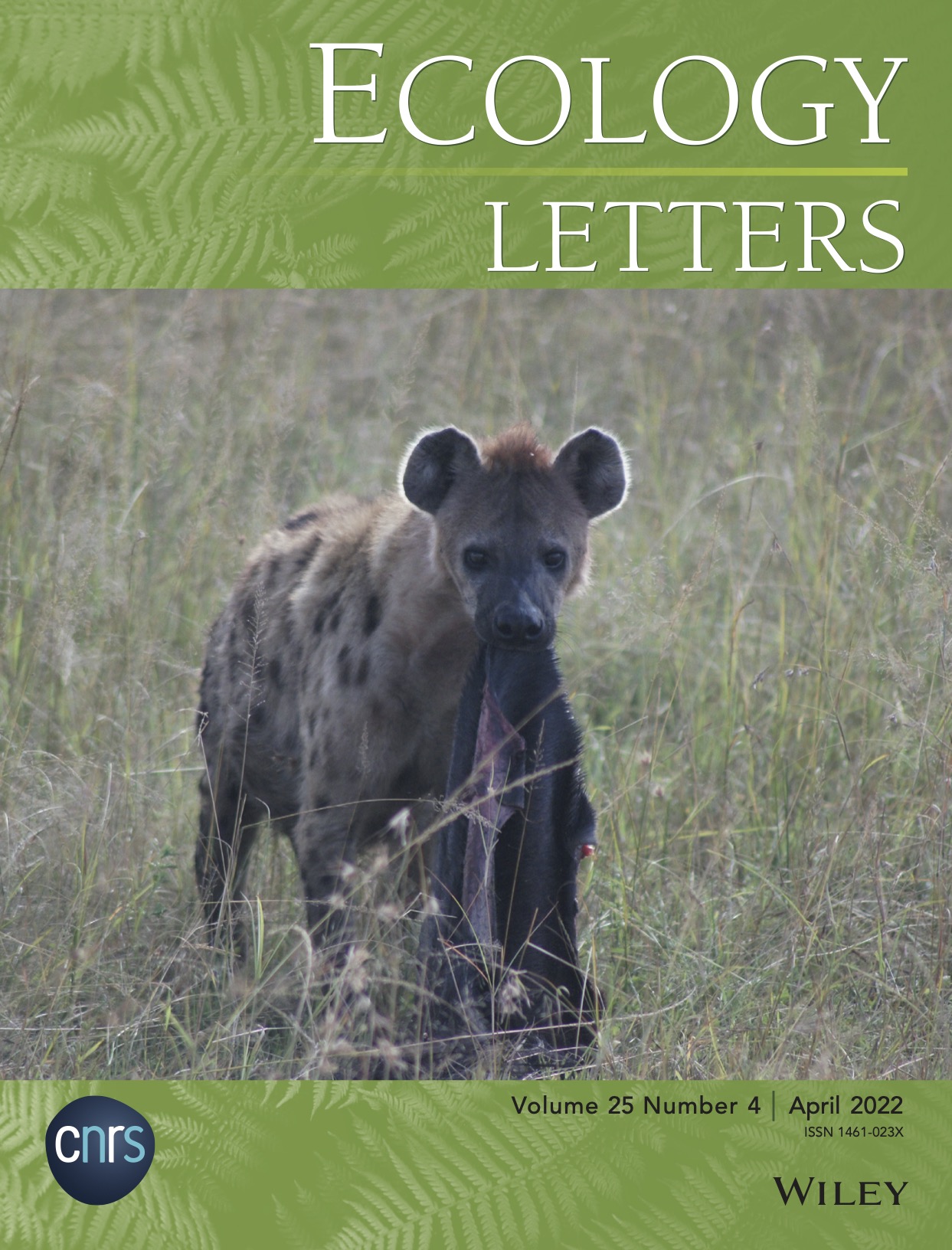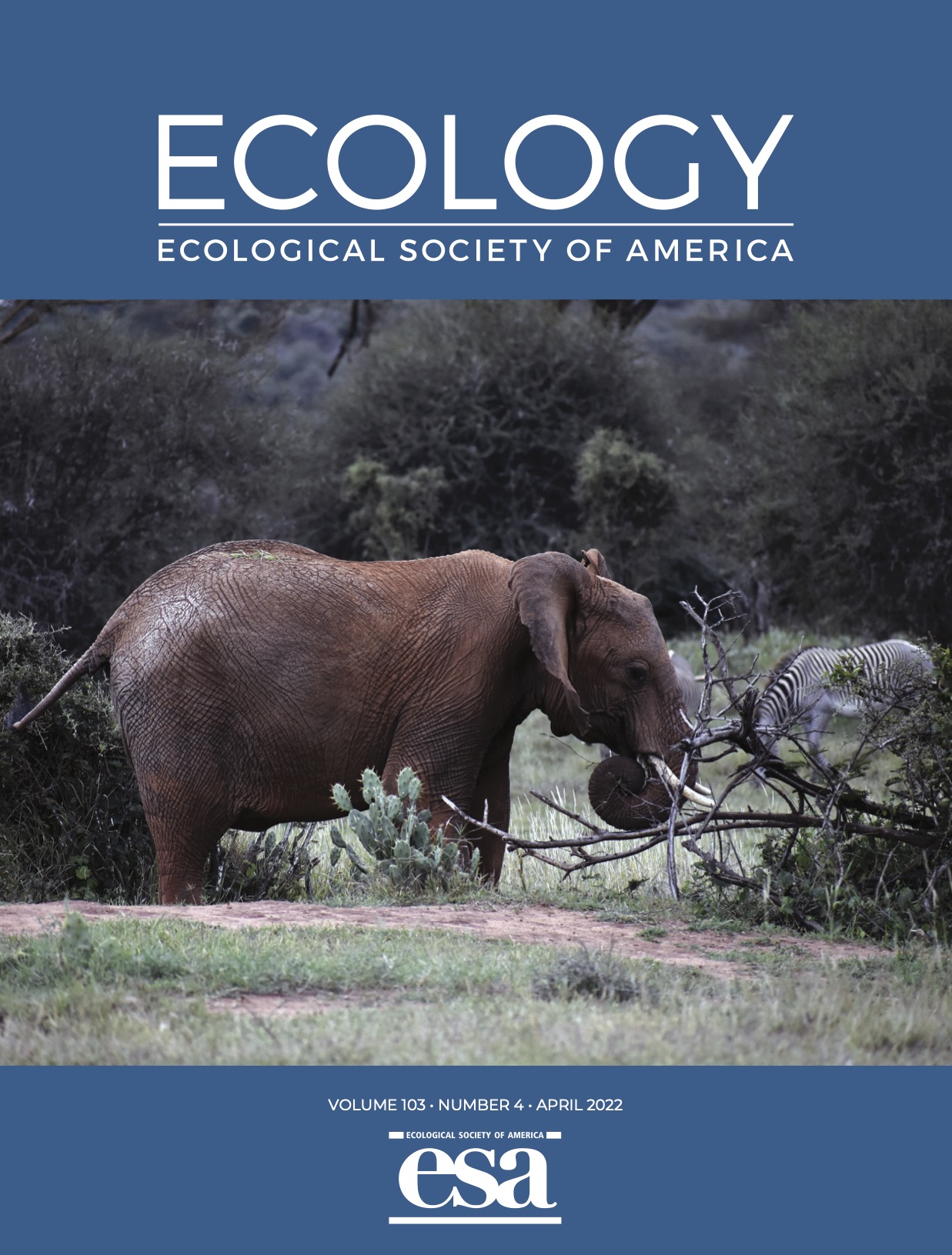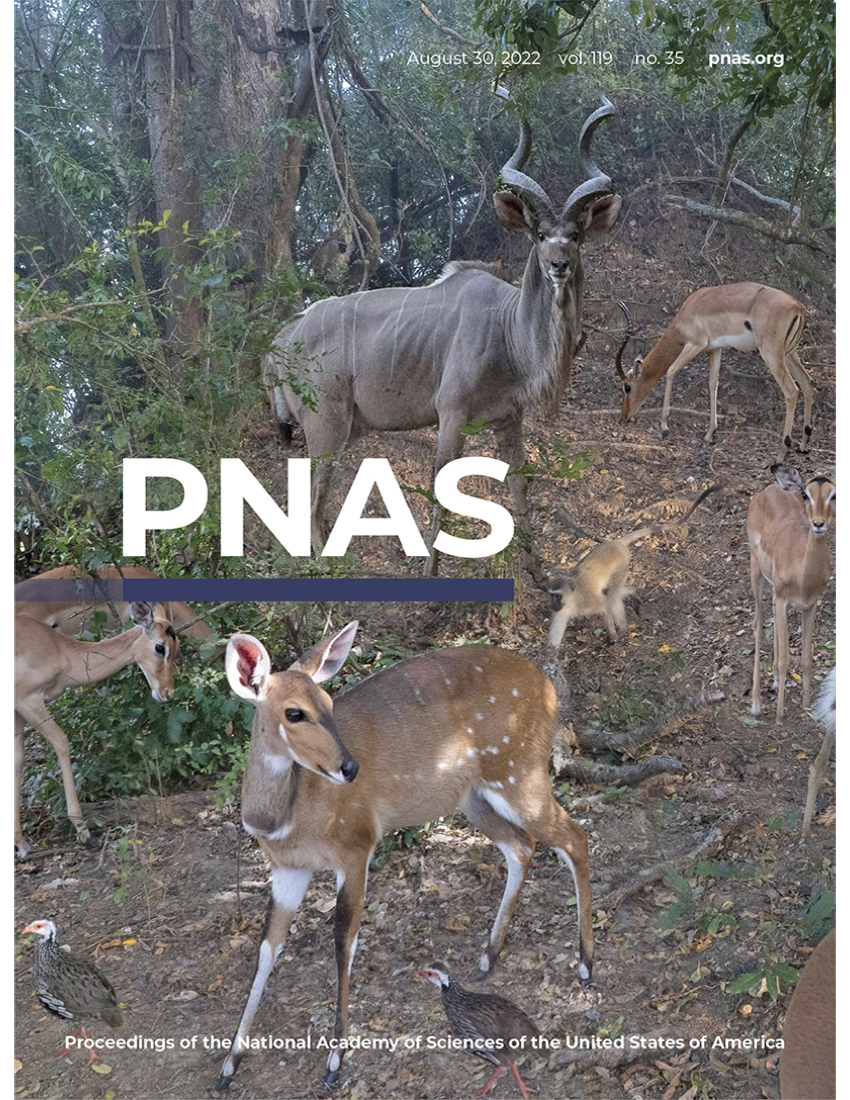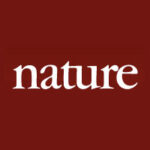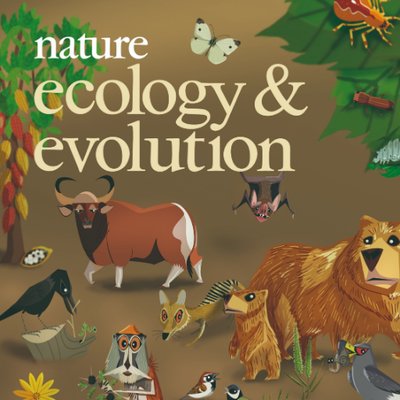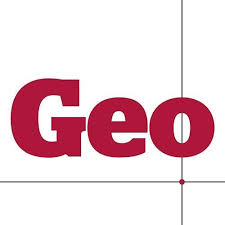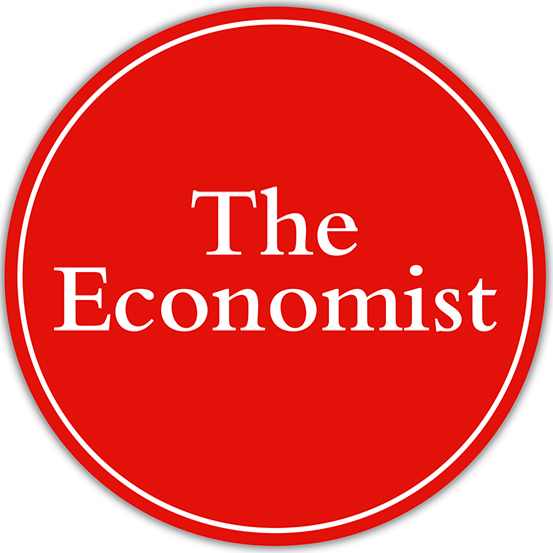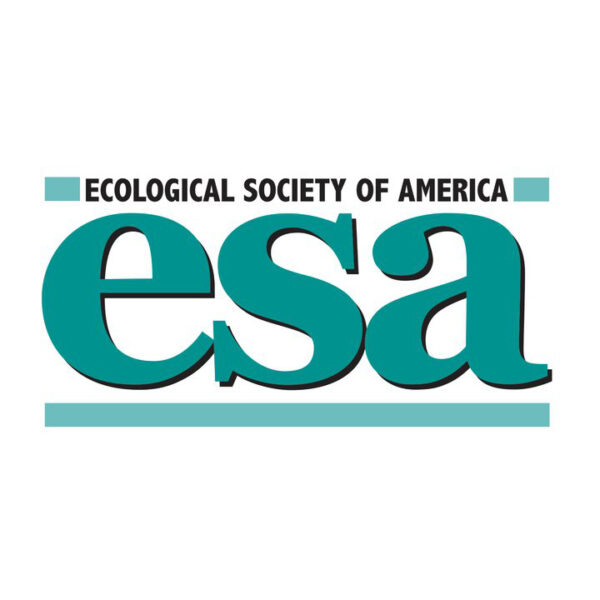Publications
2023
Pringle, RM, JO Abraham, TM Anderson, TC Coverdale, AB Davies, CL Dutton, A Gaylard, JR Goheen, RM Holdo, MC Hutchinson, CM Kimuyu, RA Long, AL Subalusky, and MP Veldhuis. 2023. Impacts of large herbivores on terrestrial ecosystems. Current Biology, 33:11. [PDF]
Palmer, MS, KM Gaynor, JO Abraham, RM Pringle. 2023. The role of humans in dynamic landscapes of fear. Trends in Ecology & Evolution, 38:217–218. [PDF]
2022
Wells, HBM, Crego, RD, Alston, JM, Ndung’u, SK, Khasoha, LM, Reed, CG, Hassan, AA, Kurukura, S, Ekadeli, J, Namoni, M, Stewart, PS, Kimuyu, DM, Wolf, AA, Young, TP, Kartzinel, TR, Palmer, TM, Goheen, JR, and RM Pringle. 2022. Wild herbivores enhance resistance to invasion by exotic cacti in an African savanna. Journal of Ecology doi: 10.1111/1365-2745.14010. [PDF]
Palmer, MS, C Wang, J Plucinski, and RM Pringle. 2022. BoomBox: an automated behavioral response (ABR) camera trap module for wildlife playback experiments. Methods in Ecology & Evolution 13:611-618. [PDF]
Hutchinson, MC, AP Dobson, and RM Pringle. 2022. Dietary abundance distributions: dominance and diversity in vertebrate diets. Ecology Letters 25:992-1008. [PDF]
Alston, JM, CG Reed, LM Khasoha, BRP Brown, G Busienei, N Carlson, TC Coverdale, M Dudenhoeffer, MA Dyck, J Ekeno, AA Hassan, R Hohbein, RP Jakopak, B Kimiti, S Kurukura, P Lokeny, AM Louthan, S Musila, PM Musili, T Tindall, S Weiner, TR Kartzinel, TM Palmer, RM Pringle, and JR Goheen. 2022. Ecological consequences of large-herbivore exclusion in an African savanna: 12 years of data from the UHURU experiment. Ecology 103:e3649. [PDF] [ESA Bulletin Photo essay by Courtney Reed et al.]
2021
Campbell-Staton, SC, BJ Arnold, D Gonçalves, P Granli, J Poole, RA Long, and RM Pringle. 2021. Ivory poaching and the rapid evolution of tusklessness in African elephants. Science 374:483-487. [PDF] [Science Perspective by Chris Darimont & Fanie Pelletier]
Coverdale, TC, RD O’Connell, MC Hutchinson, A Savagian, TR Kartzinel, TM Palmer, JR Goheen, DJ Augustine, M Sankaran, CE Tarnita, and RM Pringle. 2021. Large herbivores suppress liana infestation in an African savanna. Proceedings of the National Academy of Sciences USA 118:e2101676118. [PDF]
Becker, JA, MC Hutchinson, AB Potter, S Park, JA Guyton, K Abernathy, VF Americo, AG da Conceiçao, TR Kartzinel, L Kuziel, NE Leonard, E Lorenzi, NC Martins, J Pansu, WL Scott, MK Stahl, KR Torrens, ME Stalmans, RA Long, and RM Pringle. 2021. Ecological and behavioral mechanisms of density-dependent habitat expansion in a recovering African ungulate population. Ecological Monographs 91:e01476. [PDF]
Pringle, RM. 2021. Ecology: A revolution in resource partitioning. Current Biology 31:R1467-R1490. [PDF]
Wells, HBM, RD Crego, OH Opedal, LM Khasoha, JM Alston, CG Reed, S Weiner, S Kurukura, AA Hassan, M Namoni, J Ekadeli, DM Kimuyu, TP Young, TR Kartzinel, TM Palmer, RM Pringle, and JR Goheen. Experimental evidence that effects of megaherbivores on mesoherbivore space use are influenced by species’ traits. Journal of Animal Ecology 90:2510-2522. [PDF]
Tombak, KJ, CB Hansen, JM Kinsella, J Pansu, RM Pringle, and DI Rubenstein. 2021. The gastrointestinal nematodes of plains and Grevy’s zebras: phylogenetic relationships and host specificity. International Journal of Parasitology: Parasites and Wildlife 16:228-235. [PDF]
Castillo Vardaro, JA, JA Bonachela, CCM Baker, ML Pinsky, DF Doak, RM Pringle, and CE Tarnita. 2021. Resource availability and heterogeneity shape the self-organization of regular spatial patterning. Ecology Letters 24:1880-1891. [PDF]
TJ Guy, MC Hutchinson, KCR Baldock, E Kayser, B Baiser, PPA Staniczenko, JR Goheen, RM Pringle, and TM Palmer. 2021. Large herbivores transform plant-pollinator networks in an African savanna. Current Biology 31:2964-2971. [PDF] [Dispatch by Nico Blüthgen & Michael Staab]
2020
Pringle, RM and MC Hutchinson. 2020. Resolving food-web structure. Annual Review of Ecology, Evolution, and Systematics 51:55-80. [PDF]
Kartzinel, TR and RM Pringle. 2020. Multiple dimensions of dietary diversity in large mammalian herbivores. Journal of Animal Ecology 89:1482-1496. [PDF]
Pringle, RM. 2020. Untangling food webs. Pp. 225-238 in A Dobson, RD Holt, and D Tilman (eds), Unsolved Problems in Ecology. Princeton University Press, Princeton, NJ, USA. [PDF]
Guyton, JA, J Pansu, MC Hutchinson, TR Kartzinel, AB Potter, TC Coverdale, JH Daskin, AG da Conceição, MJS Peel, ME Stalmans, and RM Pringle. 2020. Trophic rewilding revives biotic resistance to shrub invasion. Nature Ecology & Evolution 4:712-724. [PDF] [Nature News & Views by A. Mitchinson]
Pringle, RM. 2020. Paleoecology: the functional uniqueness of ancient megafauna. Current Biology 30:R32–R35. [PDF]
Branco, PS, JA Merkle, RM Pringle, L King, T Tindall, M Stalmans, and RA Long. 2019. An experimental test of community-based strategies for mitigating human-wildlife conflict around protected areas. Conservation Letters 2019:e12679. [PDF]
2019
Kartzinel, TR, JC Hsing, PM Musili, BRP Brown, and RM Pringle. 2019. Covariation of diet and gut microbiome in African megafauna. Proc. Natl. Acad. Sci. USA 116:23588–23593. [PDF]
Reese, AT, TR Kartzinel, BL Petrone, PJ Turnbaugh, RM Pringle, and LA David. 2019. Using DNA metabarcoding to evaluate the plant component of human diets: a proof of concept. mSystems 4:e00458-19. [PDF] [Commentary by F Maixner]
Wegener, JE, KP Mulder, RM Pringle, JB Losos, and JJ Kolbe. 2019. Head size of male and female lizards increases with population density across island populations in the Bahamas. Breviora 566:1-9. [PDF]
Coverdale, TC, IJ McGeary, RD O’Connell, TM Palmer, JR Goheen, M Sankaran, DJ Augustine, AT Ford, and RM Pringle. 2019. Strong but opposing effects of associational resistance and susceptibility on defense phenotype in an African savanna plant. Oikos 128:1772-1782. [PDF]
Pringle, RM, TR Kartzinel, TM Palmer, TJ Thurman, K Fox-Dobbs, CCY Xu, MC Hutchinson, TC Coverdale, JH Daskin, DA Evangelista, KM Gotanda, NA Man in ‘t Veld, JE Wegener, JJ Kolbe, TW Schoener, DA Spiller, JB Losos, and RDH Barrett. 2019. Predator-induced collapse of niche structure and species coexistence. Nature 570: 58-64. [PDF] [Nature News & Views by Os Schmitz] [‘Behind the Paper’]
Hu J, AM Askary, TJ Thurman, DA Spiller, TM Palmer, RM Pringle, and RDH Barrett. 2019. The epigenetic signature of colonizing new environments in Anolis lizards. Molecular Biology and Evolution. 36:2165–2170. [PDF]
Pringle, RM. 2019. A mountain of ecological interactions. Nature 568:38-39. [PDF]
Atkins, JL, RA Long, J Pansu, JH Daskin, AB Potter, M Stalmans, CE Tarnita, and RM Pringle. 2019. Cascading impacts of large-carnivore extirpation in an African ecosystem. Science 364:173-177. [PDF]
Stalmans ME, TJ Massad, MJS Peel, CE Tarnita, and RM Pringle. 2019. War-induced collapse and asymmetric recovery of large-mammal populations in Gorongosa National Park, Mozambique. PLOS ONE 14:e0212864. [PDF]
Branco, PS, JA Merkle, RM Pringle, J Pansu, AB Potter, A Reynolds, M Stalmans, and RA Long. 2019. Determinants of elephant foraging behavior in a coupled human-natural system: is brown the new green? Journal of Animal Ecology 88:780-792. [PDF]
Gill, BA, S Kurukura, AA Hassan, JR Goheen, WJ Kress, M Kuzmina, RM Pringle, and TR Kartzinel. 2019. Plant DNA-barcode library and community phylogeny for a semi-arid East African savanna. Molecular Ecology Resources 19:838-846. [PDF]
Pansu, J, JA Guyton, AB Potter, JL Atkins, JH Daskin, B Wursten, TR Kartzinel, and RM Pringle. 2019. Trophic ecology of large herbivores in a reassembling African ecosystem. Journal of Ecology 107:1355-1376. [PDF]
2018
Reese, AT, FC Pereira, A Schintlmeister, D Berry, M Wagner, LP Hale, HK Durand, X Zhou, R Premont, AM Diehl, TM O’Connell, SC Alberts, TR Kartzinel, RM Pringle, RR Dunn, JP Wright, and LA David. Microbial nitrogen limitation in the mammalian large intestine. Nature Microbiology 3:1441-1450. [PDF]
Daskin, JH and RM Pringle. 2018. Warfare and wildlife declines in Africa’s protected areas. Nature 553:328-332. [PDF]
Pringle, RM. 2018. Ecology: megaherbivores homogenize the landscape of fear. Current Biology 28:R835-R837. [PDF]
Louthan, AM, RM Pringle, JR Goheen, TM Palmer, WF Morris, and DF Doak. 2018. Aridity weakens population-level effects of multiple species interactions in Hibiscus meyeri. Proc. Natl. Acad. Sci. USA 115:543-548. [PDF]
Coverdale, TC, JR Goheen, TM Palmer, and RM Pringle. 2018. Good neighbors make good defenses: associational refuges reduce defense investment in African savanna plants. Ecology 99:1724-1736. [PDF]
Titcomb, G, RM Pringle TM Palmer, HS Young. 2018. What explains tick proliferation following large-herbivore exclusion? Proceedings of the Royal Society B 286:20180612. [PDF]
Goheen, JR, DJ Augustine, KE Veblen, DM Kimuyu, TM Palmer, LM Porensky, RM Pringle, J Ratnam, C Riginos, M Sankaran, AT Ford, AA Hassan, R Jakopak, TR Kartzinel, S Kurukura, AM Louthan, WO Odadi, TO Otieno, AM Wambua, HS Young, and TP Young. 2018. Conservation lessons from large-mammal manipulations in East African savannas: the KLEE, UHURU, and GLADE experiments. Annals of the New York Academy of Sciences 1429:31-49. [PDF]
2017
Pringle, RM. 2017. Upgrading protected areas to conserve wild biodiversity. Nature 546:91-99. [PDF] [em Português] [en Espanñol]
Pringle, RM. 2017. How large herbivores subsidize aquatic food webs in African savannas. Proc. Natl. Acad. Sci. USA 114:7489-7491. [PDF]
Pringle, RM and CE Tarnita. 2017. Spatial self-organization of ecosystems: integrating multiple mechanisms of regular-pattern formation. Annual Review of Entomology 62:359-377. [PDF]
Tarnita, CE, JA Bonachela, E Sheffer, JA Guyton, TC Coverdale, RA Long, and RM Pringle. 2017. A theoretical foundation for multi-scale regular vegetation patterns. Nature 541:398-401. [PDF]
Long, RA, A Wambua, JR Goheen, TM Palmer, and RM Pringle. 2017. Climatic variation modulates the indirect effects of large herbivores on small-mammal habitat use. Journal of Animal Ecology 86:739-748. [PDF]
Palmer, TM, C Riginos, R Damiani, N Morgan, J Lemboi, J Lengingiro, J Ruiz Guajardo, and RM Pringle. 2017. Influence of neighboring plants on the dynamics of an ant-acacia protection mutualism. Ecology: doi:10.1002/ecy.2008. [PDF]
Titcomb, G, BF Allan, T Ainsworth, L Henson, T Hedlund, RM Pringle, TM Palmer, L Njoroge, MG Campaña, R Fleischer, JN Mantas, and HS Young. 2017. Interacting effects of wildlife loss and climate on ticks and tick-borne disease. Proceedings of the Royal Society B: 286:20170475. [PDF]
Young, HS, DJ McCauley, R Dirzo, CL Nunn, B Agwanda, M Campana, R Fleischer, EO Castillo, D Salked, E Lambin, JR Goheen, TM Palmer, RM Pringle, TP Young, and KM Helgen. 2017. Interacting effects of land-use and climate on rodent-borne disease in central Kenya. Philosophical Transactions of the Royal Society B 372:20160116. [PDF]
Pellegrini, AFA, RM Pringle, N Govender, and LO Hedin. 2017. Woody plant biomass and carbon exchange depend on elephant-fire interactions in African savanna. Journal of Ecology 105:111-121. [PDF]
Ripple, WJ, and 42 co-authors. 2017. Conserving the world’s megafauna and biodiversity: the fierce urgency of now. BioScience 67:197-200. [PDF]
2016
Pringle, RM, KM Prior, TM Palmer, TP Young, and JR Goheen. 2016. Large herbivores promote habitat specialization and beta diversity of African savanna trees. Ecology 97:2640-2657. [PDF]
Coverdale, TC, TR Kartzinel, KL Grabowski, RK Shriver, AA Hassan, JR Goheen, TM Palmer, and RM Pringle. 2016. Elephants in the understory: opposing direct and indirect effects of consumption and ecosystem engineering by megaherbivores. Ecology 97:3219-3230. [PDF]
Ripple, WJ, and 42 co-authors. Saving the world’s terrestrial megafauna. BioScience 66:807-812. [PDF]
Daskin, JH and RM Pringle. 2016. Does primary productivity modulate the indirect effects of large herbivores? A global meta-analysis. Journal of Animal Ecology 85:857–868. [PDF]
Daskin, JH, M Stalmans, and RM Pringle. 2016. Ecological legacies of civil war: 35-year increase in savanna tree cover following wholesale large-mammal declines. Journal of Ecology 104:79-89 [PDF]
2015
Pringle, RM, DM Kimuyu, RL Sensenig, TM Palmer, C Riginos, KE Veblen, TP Young. 2015. Synergistic effects of fire and elephants on arboreal animals in an African savanna. Journal of Animal Ecology 84:1637-1645. [PDF]
Kartzinel, TR, PA Chen, TC Coverdale, DL Erickson, WJ Kress, ML Kuzmina, DI Rubenstein, W Wang, and RM Pringle. 2015. DNA metabarcoding illuminates dietary niche partitioning by African large herbivores. Proc. Natl. Acad. Sci. USA 112:8019-8024. [PDF] [PNAS Commentary by Dave Tilman & Elizabeth Borer]
Bonachela, JA, RM Pringle, E Sheffer, TC Coverdale, JA Guyton, KK Caylor, SA Levin, CE Tarnita. 2015. Termite mounds can increase the robustness of dry land ecosystems to climatic change. Science 347:651-655. [PDF]
Fraser, LH, and 58 co-authors. 2015. Worldwide evidence supporting a unimodal relationship between productivity and plant species richness. Science 349:302-305. [PDF]
Kartzinel, TR and RM Pringle. 2015. Molecular detection of invertebrate prey in vertebrate diets: trophic ecology of Caribbean island lizards. Molecular Ecology Resources 15:903-914. [PDF]
Ford, AT, JR Goheen, DJ Augustine, MF Kinnaird, TG O’Brien, TM Palmer, RM Pringle, and R Woodroffe. 2015. Recovery of African wild dogs suppresses prey but does not trigger a trophic cascade. Ecology 96:2705-2714. [PDF]
Ceballos, G, PR Ehrlich, AD Barnosky, A Garcia, RM Pringle, and TM Palmer. 2015. Accelerated modern human-induced species losses: entering the sixth mass extinction. Science Advances. 1:e1400253. [PDF]
Young, HS, DJ McCauley, R Dirzo, JR Goheen, B Agwanda, AW Ferguson, SN Kinyua, MM McDonough, TM Palmer, RM Pringle, TP Young, and KM Helgen. 2015. Context-dependent effects of large-wildlife declines on small mammal communities in central Kenya. Ecological Applications 25:348-360. [PDF]
Pringle, RM. 2015. Review of “How to do ecology: a concise handbook (2nd edition)” by R Karban, M Huntzinger, & IS Pearse. Quarterly Review of Biology 90:324-325. [PDF]
2014
Ford, AT, JR Goheen, TO Otieno, L Bidner, L Isbell, TM Palmer, R Woodroffe, D Ward, and RM Pringle. 2014. Large carnivores make savanna tree communities less thorny. Science 346:346-349. [PDF]
Tarnita, CE, TM Palmer, and RM Pringle. Colonization and competition dynamics can explain incomplete sterilization parasitism in ant-plant symbioses. Ecology Letters 17:1290-1298. [PDF]
Pringle, RM, JR Goheen, TM Palmer, GK Charles, E DeFranco, R Hohbein, AT Ford, B Torto, and CE Tarnita. Low functional redundancy among sympatric large herbivores in regulating an encroaching shrub (Solanum campylacanthum) in African savannah. Proceedings of the Royal Society B 281:20140390. [PDF]
Louthan, AM, DF Doak, JR Goheen, TM Palmer, and RM Pringle. 2014. Mechanisms of plant-plant interactions: concealment from herbivores is more important than abiotic-stress mediation in an African savanna. Proceedings of the Royal Society B 281:20132647. [PDF]
Ngatia, LW, KR Reddy, PKR Nair, RM Pringle, TM Palmer, and BL Turner. 2014. Seasonal patterns in decomposition and nutrient release from East African savanna grasses grown under contrasting nutrient conditions. Agriculture, Ecosystems & Environment 188:12-19. [PDF]
Mendenhall, CD, G Ceballos, LO Frishkoff, J Pacheco, G Santos-Barrera, PR Ehrlich, GC Daily, and RM Pringle. 2014. Countryside biogeography of Neotropical reptiles and amphibians. Ecology 95:856-870. [PDF]
Kartzinel, TR, JR Goheen, GK Charles, E DeFranco, JE Maclean, TO Otieno, TM Palmer, and RM Pringle. 2014. Plant and small-mammal responses to large-herbivore exclusion in an African savanna: the first five years of the UHURU experiment. Ecology 95:787. [PDF]
Pringle, RM. 2014. Where the wild beasts are. Review of “Serengeti story: life and science in the world’s greatest wildlife region” by ARE Sinclair. Ecology 95:583-584. [PDF]
2013
Palmer TM, ML Stanton, TP Young, JR Goheen, JS Lemboi, and RM Pringle. 2013. A role for indirect facilitation in maintaining diversity in a guild of African acacia ants. Ecology 94:1531-1539. [PDF]
Donihue, CM, LM Porensky, J Foufopoulos, C Riginos, and RM Pringle. 2013. Glade cascades: indirect legacy effects of pastoralism enhance the abundance and spatial structuring of arboreal fauna. Ecology 94:827-837. [PDF]
Louthan, AM, DF Doak, JR Goheen, TM Palmer, and RM Pringle. 2013. Climatic stress mediates the impacts of herbivory on plant population structure and components of individual fitness. Journal of Ecology 101:1074-1083. [PDF]
Young, HS, DJ McCauley, KM Helgen, E Otarola-Castillo, JR Goheen, TM Palmer, RM Pringle, TP Young, and R Dirzo. 2013. Effects of mammalian herbivore declines on plant communities: observations and experiments in an African savanna. Journal of Ecology 101:1030-1041. [PDF]
Goheen, JR, TM Palmer, GK Charles, KM Helgen, SN Kinyua, JE Maclean, HS Young, and RM Pringle. 2013. Piecewise disassembly of a large-herbivore community across a rainfall gradient: the UHURU experiment. PLOS One 8:e55192. doi:10.1371/journal.pone.0055192 [PDF]
2012
Pringle, RM. 2012. How to be manipulative. American Scientist 100:30-37. [PDF]
2011
Losos, JB and RM Pringle. 2011. Competition, predation, and natural selection in island lizards. Nature 475:E1-2. [PDF]
Pringle, RM, TM Palmer, JR Goheen, DJ McCauley, F. Keesing. 2011. Ecological importance of large herbivores in the Ewaso ecosystem. Pp. 43-53 in NJ Georgiadis (ed), Conserving Wildlife in African Landscapes: Kenya’s Ewaso Ecosystem. Smithsonian Contributions to Zoology No. 632. Smithsonian Institution Scholarly Press, Washington DC. [PDF]
Pringle, RM. 2011. Nile perch. Pp. 484-488 in D. Simberloff and M. Rejmánek (eds), Encyclopedia of Biological Invasions. University of California Press, Berkeley, CA. [PDF]
2010
Palmer, TM, DF Doak, ML Stanton, JL Bronstein, ET Kiers, TP Young, JR Goheen, and RM Pringle. 2010. Synergy of multiple partners, including freeloaders, increases host fitness in a multispecies mutualism. Proc. Natl. Acad. Sci. USA 107:17234-17239. [PDF]
Pringle, RM, DF Doak, AK Brody, R Jocqué, and TM Palmer. 2010. Spatial pattern enhances ecosystem functioning in an African savanna. PLOS Biology 8:e1000377. doi:10.1371/journal.pbio.1000377 [PDF] [PLOS Biology Commentary by Oswald J Schmitz]
Pringle, RM. 2010. The costs of large-mammal extinctions. Pp. 52-53 in NS Sodhi and PR Ehrlich (eds), Conservation Biology for All. Oxford University Press, Oxford, UK. [PDF]
Pringle, RM. 2010. Review of “Conservation Psychology: Understanding and Promoting Human Care for Nature” by S Clayton and G Myers. Environmental Conservation 37:222. [PDF]
2009
Pringle, RM, M Syfert, JK Webb, and R Shine. 2009. Quantifying historical changes in habitat availability for endangered species: use of pixel- and object-based remote sensing. Journal of Applied Ecology 46:544-553. [PDF]
Angilletta, MJ, MW Sears, and RM Pringle. 2009. The spatial dynamics of nesting behavior: lizards shift microhabitats to construct nests with beneficial thermal properties. Ecology 90:2933-2939. [PDF]
Roman, J, PR Ehrlich, RM Pringle, and JC Avise. 2009. Facing extinction: nine steps to save biodiversity. Solutions 1:27-37. [PDF]
Webb, JK, RM Pringle, and R Shine. 2009. Intraguild predation, thermoregulation, and microhabitat selection by snakes. Behavioral Ecology 20:271-277. [PDF]
Pringle, RM. 2009. Review of “Paradise Found: Nature in America at the Time of Discovery,” by S Nicholls. Environmental Conservation 36:173-174. [PDF]
2008
Pringle, RM and K Fox-Dobbs. 2008. Coupling of canopy and understory food webs by ground-dwelling predators. Ecology Letters 11:1328-1337. [PDF]
Ehrlich, PR and RM Pringle. 2008. Where does biodiversity go from here? A grim business-as-usual forecast and a hopeful portfolio of partial solutions. Proc. Natl. Acad Sci. USA 105:11579-11586. [PDF]
Pejchar, L., RM Pringle, J Ranganathan, JR Zook, G Duran, and GC Daily. 2008. Birds as agents of seed dispersal in a human-dominated landscape in Costa Rica. Biological Conservation 141:536-544. [PDF]
Palmer, TM, ML Stanton, TP Young, JR Goheen, RM Pringle, and R Karban. 2008. Putting ant-acacia mutualisms to the fire. Science 319:1760-1761. [PDF]
Pringle, RM. 2008. Elephants as agents of habitat creation for small vertebrates at the patch scale. Ecology 89:26-33. [PDF]
Palmer, TM, ML Stanton, TP Young, JR Goheen, RM Pringle, and R Karban. 2008. Breakdown of an ant-plant mutualism follows the loss of large herbivores from an African savanna. Science 319:192-195. [PDF]
2007
Pringle, RM, TP Young, DI Rubenstein, and DJ McCauley. 2007. Herbivore-initiated interaction cascades and their modulation by productivity in an African savanna. Proc. Natl. Acad. Sci. USA 104:193-197. [PDF] [PNAS Commentary by Andrew Larson & Bob Paine]
Chan, KMA, RM Pringle, J Ranganathan, CL Boggs, YE Chan, PR Ehrlich, PK Haff, NE Heller, K Al-Khafaji, and D. MacMynowski. 2007. When agendas collide: human welfare and biological conservation. Conservation Biology 21:59-68. [PDF]
2006
McCauley, DJ, F Keesing, TP Young, BF Allan, and RM Pringle. 2006. Indirect effects of large herbivores on snakes in an African savanna. Ecology 87:2657-2663. [PDF]
Pringle, RM. 2006. Thinking anthropologically about nature. Review of “People and Nature,” by EF Moran. Trends in Ecology & Evolution 21:483-484. [PDF]
2005
Pringle, RM. 2005. The Nile perch in Lake Victoria: local responses and adaptations. Africa 75:510-538. [PDF]
Pringle, RM. 2005. The origins of the Nile perch in Lake Victoria. BioScience 55:780-787. [PDF]
Webb, JK, R Shine, and RM Pringle. 2005. Canopy removal restores habitat quality for an endangered snake in a fire-suppressed landscape. Copeia 2005:894-900. [PDF]
2004
Webb, JK, RM Pringle, and R Shine. 2004. How do nocturnal snakes select diurnal retreat sites? Copeia 2004: 919-925. [PDF]
2003
Pringle, RM, JK Webb, and R Shine. 2003. Canopy structure, microclimate, and habitat selection by the nocturnal snake Hoplocephalus bungaroides. Ecology 84:2668-2679. [PDF]
